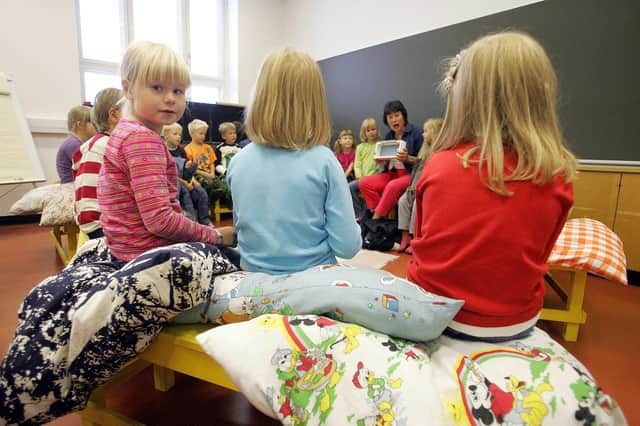Scottish teachers will be googling ‘working in Finland’ after reading this – Cameron Wyllie


Quiz for today – what do the following countries have in common: Hong Kong; Estonia; Japan; Canada; Singapore; South Korea and Finland?
No, it’s not their national flower, the gender of their Prime Minister or their divorce rate. It’s the fact that all of them do well – and many of them have for a long time – in the Pisa (Programme for International Student Assessment) rankings, worked out every few years by the Organisation for Economic Co-operation and Development (OECD).
Advertisement
Hide AdAdvertisement
Hide AdThese tests use the common assessment of tens of thousands of schoolchildren worldwide to assess lots of features – but the ones that usually make the headlines are results in reading, writing, maths and science. If you like, you can go to the Pisa website and try some sample questions.
I have had rather a productive week, instead of my usual retirement schedule of reading in bed, thinking about gardening (still too early, really) and looking at clothes in shops that are now too expensive for me to actually shop in.
Instead, I have been reading a book called ‘Cleverlands’ which is about countries whose educational systems do well in the Pisa tests, including some of those names above; and I have also been to a lecture, sponsored by the David Hume Institute, given by Olli-Pekka Heinonen, a former Minister of Education in Finland, who is now director-general of the Finnish National Agency for Education.
While this very clever and thoughtful man was talking, I kept coming back to the state of education in Scotland, as, it seemed from the question session, did most people in the audience.
Now, I am not saying for a moment that all that matters in education are the Pisa rankings but I think most parents in Scotland would agree that these old-fashioned concepts – the ability to read and write and do sums – are still pretty important, even in these days when Scottish education seems more focused on our young people becoming ‘effective contributors’, whatever that means.
Mr Heinonen said that it wasn’t for him to comment on Scottish education, and that it was important to remember that every country’s education system was “based on the beliefs and culture of that nation”.
I think that’s right but it is difficult to pin down what the common ground is among the successful countries listed above: I visited Japan last year (and loved it) but it didn’t feel much like Canada (which I also love), to be honest; I can’t think Estonia will culturally be much like Singapore. And, in any case, historically, Scotland was esteemed for its very positive emphasis on the importance of education for all its children, but especially for the ones from the poorest backgrounds.
So how do we get Scotland up these rankings a bit? Well, Finland provides some food for thought. Here are three core differences between our two countries in the way we approach education – I don’t think any of these things are unrealistic targets.
Advertisement
Hide AdAdvertisement
Hide AdFirstly, children in Finland do not start formal education until they are seven; in the year before that they go to specialist preschools, where they are taught how to learn, through the medium of play, by highly qualified practitioners.
Teachers are paid more
By the end of their first year of ‘school’ children in Finland can read better than children in the UK who have been learning to read for three years. Something to think about.
Also, Finnish children go to what are, in effect, comprehensive schools from the age of seven to 16. In Scotland, children follow the same path from five to 18. Crucially, at 16, Finnish students then choose to follow either an academic or a vocational path.
Additionally, all the way through these years, there are special small classes and individual teaching for children who aren’t keeping up. Analysis shows that Finland’s achievement in the Pisa scores largely stems from the relatively high scores of less able pupils – this is also true for Singapore and Japan.
But, of course, the main thing is the way in which Finland treats its teachers. They are paid more – in Finland, teaching is a highly sought after occupation, so they don’t have teacher shortages.
Each teacher actually teaches a considerably smaller number of hours than they would do here, giving them time to spend on lesson preparation and to spend time with pupils who need help.
The imnportance of trust
Teachers have a great deal of autonomy, as do the heads of schools, and there are no school inspections. (Teachers reading this are either laughing or crying, as they Google ‘working in Finland’).
Parents and communities support teachers – the school is central to the social fabric of the area. There is a consensus about education policy among political parties in Finland, so teachers see a clear way forward, whereas teachers here have been battered by changes in education policy for decades.
Advertisement
Hide AdAdvertisement
Hide AdFinally, there is this. Trust. Mr Heinonen, who, in effect, leads education in his country said: “My main task is to feed trust into the Finnish education system.” I felt a lump in my throat. Trust! My goodness, do teachers in Scotland, working away for the good of their pupils, often stretched to the limit every day, beset by bureaucracy and ‘initiatives’, trust Education Scotland? I hae ma doots. There happened to be a prominent Scottish parliamentarian sitting beside me at the lecture, so I took the opportunity at the end to say “I hope you were listening!” And I hope he was.
Cameron Wyllie’s blog is at www.ahouseinjoppa.wordpress.com
Comments
Want to join the conversation? Please or to comment on this article.
